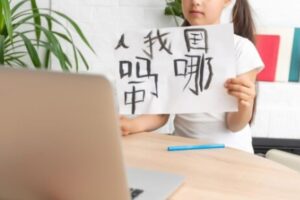
The Shichida Method, originating from Japan and gaining prominence across the globe, represents a revolutionary technique for early childhood training. This technique transcends traditional educational mastering by emphasizing the improvement of the whole baby, with a specific consciousness on improving the emotional and high-brow bond between the child and infant. It operates on the idea that every infant is born with significant potential, which may be nurtured via particular sports geared toward stimulating the proper brain, liable for creativity, intuition, and emotional intelligence.
As societies increasingly recognize the benefits of the Shichida Method for babies in providing a holistic education that balances cognitive abilities with emotional and social development, the Shichida Method offers a compelling framework. It encourages a nurturing environment where learning is intertwined with love and positive reinforcement, fostering not only academic excellence but also a deep, empathetic connection in the family. This method has found a welcoming audience in Singapore, where the emphasis on education aligns with the desire for a nurturing approach to raising well-rounded individuals.
Origins and Principles of the Shichida Method
The adventure of the Shichida Method began in Japan, founded using Makoto Shichida, who devoted his existence to understanding and enhancing early life education. In its middle, the approach is constructed on the notion that every baby possesses a giant ability from delivery, and this ability may be fully found through proper stimulation and nurturing of the right mind. The right mind is related to creativity, instinct, and emotional intelligence, factors that might be critical for developing a strong figure-baby bond.
Moreover, the Shichida Method Singapore is grounded in the precept that education isn’t always just about academic success but about fostering a nicely-rounded individual capable of love, empathy, and information. This holistic method resonates deeply with Singaporean households, who price each instructional success and the cultivation of proper man or woman in their kids.
The Shichida Method in Singapore
In Singapore, the Shichida Method has not simply discovered a fertile ground but has flourished, adapting to the local context while maintaining its fundamental principles. The approach’s reputation among Singaporean parents is a testament to its effectiveness and the cultural emphasis on early childhood education. Numerous Shichida centers across the island offer baby classes tailored to the needs and aspirations of Singaporean families, making sure that the approach’s benefits are accessible to a wide audience.
The adaptation of the Shichida Method for Singaporean households entails careful balance in retaining its core principles and integrating local educational standards and expectations. This balance ensures that children receive a comprehensive education that prepares them for the rigors of Singapore’s competitive academic environment while fostering a loving and supportive family dynamic.
Key Components of the Shichida Method
At the heart of the Shichida Method are several key components that together contribute to its success in nurturing discern-infant bonding. Firstly, right brain education plays a pivotal function, with activities designed to free up the child’s innovative and intuitive skills. This component of the method encourages parents to engage with their youngsters in ways that stimulate imagination and emotional intelligence, laying the inspiration for a robust, empathetic bond.
Sensory play and using flashcards also are integral to the Shichida Method, imparting youngsters with a multisensory knowledge of experience that is both fun and academic. These activities not only facilitate cognitive development but also offer parents and youngsters opportunities to interact, play, and research together, in addition to strengthening their connection.
Perhaps most importantly, the Shichida Method emphasizes the importance of love, bonding, and high-quality reinforcement. Parents are recommended to express unconditional love and guidance for their youngsters, developing nurturing surroundings in which youngsters feel valued and understood. This emphasis on emotional guidance and fantastic reinforcement allows for the building of a stable, trusting courting between the figure and the baby, which is essential for healthy development.
Benefits of the Shichida Method for Parent-Child Bonding
The Shichida Method, with its particular approach to early life schooling, offers a plethora of blessings that expand far beyond academic success. Central to those benefits is the profound effect on parent-child bonding, a cornerstone of healthful infant development. Through its emphasis on emotional intelligence, creativity, and mutual recognition, the technique fosters surroundings wherein deep, meaningful connections can flourish.
Enhancing emotional connections among parents and youngsters is possibly the maximum benefit. By accomplishing sports that stimulate each coronary heart and thoughts, households experience a shared journey of discovery. This shared enjoyment not only nurtures a child’s cognitive and emotional growth but additionally solidifies the bond of acceptance as true with and love between a figure and a toddler. Furthermore, the technique’s attention to high-quality reinforcement and knowledge promotes a household ecosystem where children feel valued and supported, critical for his or her self-esteem and emotional well-being.
Improving communique capabilities and empathy is another key gain. The Shichida Method encourages parents to actively listen and reply to their children’s minds and emotions, fostering an surroundings of open communique. This exercise enables youngsters to increase strong verbal and non-verbal verbal exchange abilities, crucial for expressing themselves and understanding others. As kids discover ways to empathize with others’ feelings, they also discover ways to navigate social interactions more efficiently, a talent to be able to advantage them at some stage in their lives.
Challenges and Considerations
While the Shichida Method gives numerous advantages, it is not without its demanding situations and issues. One capability venture is balancing the excessive expectancies and pressures that can accompany any instructional undertaking. Parents need to not forget that the number one intention of the Shichida Method is to foster a loving, supportive court with their child, instead of to attain instructional perfection. Parents must keep in mind to tailor their expectations to their infant’s specific tempo and competencies, ensuring that the learning experience remains effective and encouraging.
Tailoring the method to fit the character baby’s desires and circle of relatives dynamics is every other crucial attention. Each infant is specific, with their very own strengths, weaknesses, and studying styles. Similarly, every family has its very own dynamics and routines. Parents may additionally need to adapt Shichida activities and ideas to higher in shape their infant’s male or woman desires and their own family’s lifestyle. Flexibility and creativity in imposing the technique can help maximize its blessings while ensuring it complements the family’s everyday life.
Must Read:- 5 Tips to Pick the Perfect Enrichment Classes for Toddlers
Conclusion
In conclusion, the Shichida Method offers a comprehensive technique to early early life schooling that transcends conventional academic studying. By focusing on the improvement of the entire infant and emphasizing the importance of a robust determine-infant bond, the method aligns with the values and aspirations of many Singaporean parents. Its advantages, from enhancing emotional connections to fostering a love for mastering, are profound and a long way-accomplishing. However, parents must navigate the demanding situations and concerns with understanding and flexibility, making sure that the method enriches their family life and supports their toddler’s unique journey of boom.




